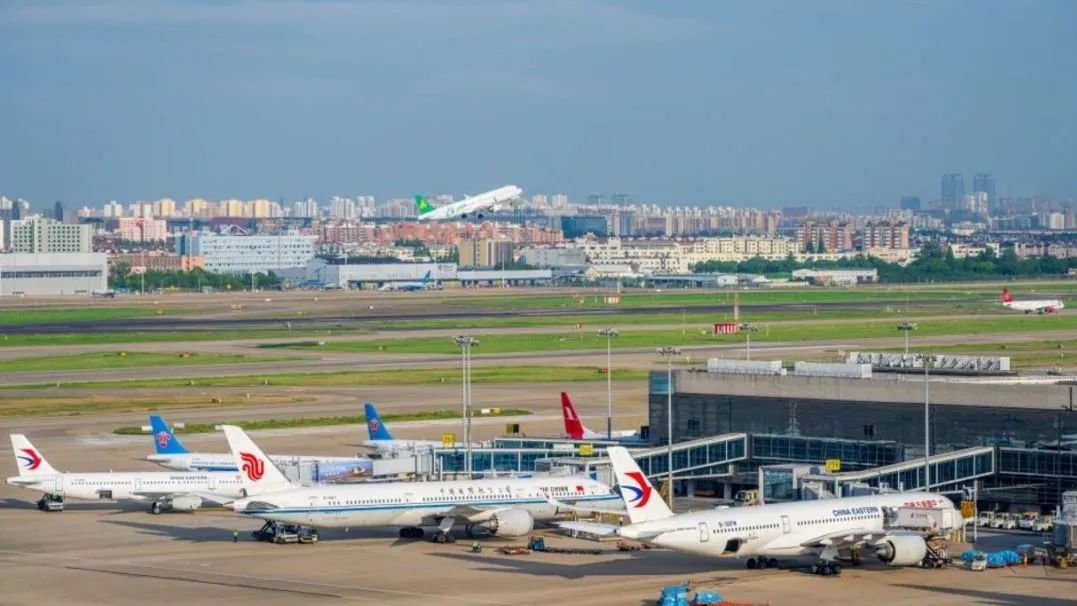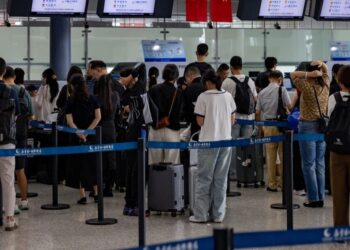
The Civil Aviation Administration of China (CAAC) announced on Sunday that Chinese airlines carried 34 percent more international passengers in the first quarter of this year, underscoring the expansion of the international network driven by surging demand.
An industry expert noted that this growth reflects the swift recovery of China’s aviation sector. Government policies facilitating personnel exchanges have played a significant role in this positive trend.
In the first quarter, Chinese airlines transported a total of 18.925 million international passengers, marking a 34 percent year-on-year increase and surpassing the pre-pandemic level of the same period in 2019 by 4.5 percent. Shang Kejia, an official from the CAAC, revealed this data at the agency’s monthly press briefing.
Passenger traffic from China to Africa surged by 241 percent, followed by Central Asia with a 233 percent increase and West Asia with a 91 percent rise.
Currently, 28 Chinese airlines and 100 foreign carriers operate international passenger routes in China, covering a total of 78 countries. This represents a net increase of four countries compared to 2019.
“The international route network continued to expand in the first quarter, with both the number of international flights and passengers rising further,” Shang stated.
Luo Chengtao, chief analyst at industry information provider VariFlight, told the Global Times on Sunday that the data indicates a rapid recovery and structural optimization of China’s international aviation market. The market has transitioned from restorative growth to structural upgrading.
Lin Zhijie, an independent market observer, commented on Sunday that the swift recovery of Chinese airlines’ global network demonstrates the resilience of the industry.
China has implemented an unprecedented expansion of its unilateral visa-free policy, seen as a crucial step in its commitment to deeper integration into the global economy. This policy now allows ordinary passport holders from 38 countries to visit China visa-free for up to 30 days.
Last year, the number of foreign tourist arrivals reached 26.94 million, a year-on-year increase of 96 percent. In the first quarter of this year, inbound foreign tourist arrivals totaled 9.215 million, a 40.2 percent year-on-year rise, according to Chinese Vice Commerce Minister Sheng Qiuping at the press conference.
In terms of flight volume, Chinese and foreign airlines operated an average of 6,395 international passenger flights per week, equivalent to 83.9 percent of the 2019 level. During the Spring Festival peak, there were 6,960 flights per week, reaching 91.3 percent of the 2019 level, the CAAC reported.
Flights from China to 35 countries, including Japan, the UK, and Italy, have already surpassed 2019 levels. The proportion of flights restored between China and countries participating in the Belt and Road Initiative reached 94.5 percent, 10.6 percentage points higher than the average.
The route network between China and traditional markets in Asia and Europe continues to improve, while routes to Latin America, the South Pacific, and Africa have further expanded, enhancing international flight accessibility, Shang added.
Air China, China’s flagship carrier, announced on Thursday that it will launch direct flights from Beijing to Cairo, Egypt, and Toronto, Canada. It will also open new routes from Beijing to Vladivostok and Irkutsk in Russia, operate routes from Seoul and Hong Kong at Beijing Daxing International Airport for the first time, and resume flights from Chengdu to Tokyo and Paris.
Moreover, Air China plans to introduce routes from Beijing to Tashkent, Urumqi to Tashkent, and Beijing to Almaty, among other Central Asian routes, from June to July, strengthening connections with countries along the Belt and Road Initiative.
The CAAC will continue to encourage the increase of international passenger flights, and airlines are urged to actively expand their route networks in emerging markets, Shang said.
Lin emphasized the importance of supporting Chinese airlines in resuming and increasing international flights and making it more convenient for foreigners to visit China.






